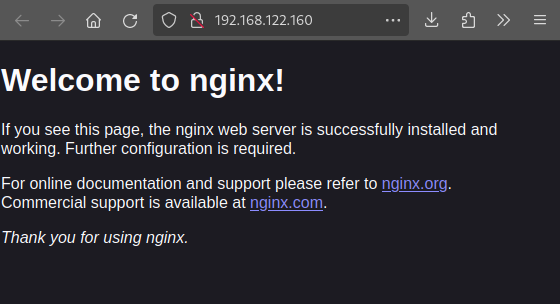Docker Containers
An operating system for switches, routers, and end devices that runs Docker?
Yes, as of Infix v24.02 support for running containers using podman is supported. Because networking is a first class citizen in Infix, you can set up quite advanced virtual topologies with containers. This blog post is the first in a series that aims to show this.
This post assumes knowledge and familiarity with Infix. Ensure you have either a network connection or console access to your Infix system and can log in to it using SSH. Recommended reading includes the networking documentation.
Introduction
All configuration and administration of networking and containers is done through the CLI:
1
2
3
4
5
admin@infix:~$ cli
See the 'help' command for an introduction to the system
admin@infix:/>
Notice the slight change in the prompt. Return to the Bash shell using the exit command, or Ctrl-D, from the “admin-exec” top level of the CLI.
Networking Basics
In Infix all network access has to be set up explicitly, so there is no default container networking setup (it’s a security thing). There are two types available to choose from:
host: Ethernet interfacebridge: Masquerading bridge
The first can be any physical port/interface which is handed over to the container or, more commonly, one end of a VETH pair.
The latter type is usually available as docker0, or podman0, on your host system. These bridges are managed by the container runtime, in the case of Infix this is podman. When a container is set to a container bridge network, a VETH pair is automatically created when the container is started – one end is attached to the bridge and the other connected to the container as a regular interface.
Here’s how you create a container bridge:
1
2
3
4
admin@infix:/> configure
admin@infix:/config> edit interface docker0
admin@infix:/config/interface/docker0> set container-network
admin@infix:/config/interface/docker0> leave
Web Server Container
Now, time for a basic web server example. For our first container we’ll be using docker://nginx:alpine. It’s a relatively small container with the Nginx web server built on top of the Alpine Linux image.
1
2
3
4
5
6
7
8
admin@infix:/> configure
admin@infix:/config> edit container web
admin@infix:/config/container/web/> set image docker://nginx:alpine
admin@infix:/config/container/web/> set volume cache target /var/cache
admin@infix:/config/container/web/> edit network
admin@infix:/config/container/web/network/> set interface docker0
admin@infix:/config/container/web/network/> set publish 8080:80
admin@infix:/config/container/web/network/> leave
Infix does not create a writable layer by default, so you need to explicitly add volumes for directories your container needs.
Issuing the command leave queues a job to download the image and create a container in the background. To see the progress:
1
admin@infix:/> show log container
or just poll the status command:
1
2
3
admin@infix:/> show container
CONTAINER ID IMAGE COMMAND CREATED STATUS PORTS NAMES
c60a6deeea4e docker.io/library/nginx:alpine nginx -g daemon o... 2 minutes ago Up 2 minutes 0.0.0.0:8080->80/tcp web
You should now be able to access the web server on port 8080 of the host’s IP address.
See the end of this post for how to store container file content in the Infix configuration! Meaning custom(er) builds of Infix can bundle a built-in container’s initial configuration in the Infix
factory-config, which can be very useful when deploying at new installations.
Customizing Content
Containers in Infix are created read-only by default, to change the content, or store state data across host restarts and upgrades, use volumes. They are a specialized type of “mount”, for people familiar with UNIX systems.
Here’s how to add a volume to your container:
1
2
3
4
5
admin@infix:/> configure
admin@infix:/config/> edit container web
admin@infix:/config/container/web/> edit volume content
admin@infix:/config/container/web/volume/content/> set target /usr/share/nginx/html
admin@infix:/config/container/web/volume/content/> leave
Named volumes have the downside of being opaque to the host, so the easiest is to upload the content using scp or editing it directly in the container:
1
2
3
4
5
6
admin@infix:/> container shell web
d95ce9f7674d:/# vi /usr/share/nginx/html/
50x.html index.html
d95ce9f7674d:/# vi /usr/share/nginx/html/index.html
... edit, save & exit from vi ...
d95ce9f7674d:/#
Container Content in Device Configuration
Save the best for last? A neat feature is that container content can be saved in the system’s startup-config and therefore be automatically be backed up by administrators snapshotting the system.
This feature is perfectly suited for container applications that need a specific site setup. For example a configuration file. Here we use the same container image to bundle an index.html file:
1
2
3
4
5
admin@infix:/> configure
admin@infix:/config/> edit container web
admin@infix:/config/container/web/> edit mount index.html
admin@infix:/config/container/web/mount/index.html/> set target /usr/share/nginx/html/index.html
admin@infix:/config/container/web/mount/index.html/> text-editor content
The content setting is an alternative to source for file mounts which allows providing the contents through the device’s configuration.
The
text-editorcommand can be changed to use other editors in thesystemconfiguration context, by default it starts a Micro Emacs clone, Mg. See the documentation for more information.
Paste in this:
1
2
3
4
5
6
7
8
9
10
11
12
13
14
15
16
17
18
19
20
21
22
23
24
<!DOCTYPE html>
<html>
<head>
<title>Welcome to Infix!</title>
<style>
html { color-scheme: light dark; }
body { width: 35em; margin: 0 auto;
font-family: Tahoma, Verdana, Arial, sans-serif; }
</style>
</head>
<body>
<h1>Welcome to the Infix Operating System!</h1>
<p>If you see this page, the nginx web server container has been
installed and is working.</p>
<p>For online documentation and support please refer to the
<a href="https://kernelkit.org/">Infix Homepage</a>.<br/>
Commercial support and customer adaptations are available from
<a href="https://wires.se">Wires</a>.</p>
<p><em>Thank you for reading this blog post!</em></p>
</body>
</html>
Save and exit with the usual Emacs salute: C-x C-x (Ctrl-X Ctrl-c, or hold down Ctrl while tapping the X and C keys).
Leave configuration context to activate your changes:
1
admin@infix:/config/container/web/mount/index.html/> leave
Reload your browser to see the change.
Fin
That’s the end of the first post about containers in Infix. Remember to save your changes for next boot:
1
admin@infix:/> copy running-config startup-config
Take care! 🧡



